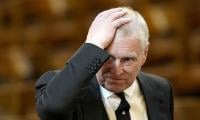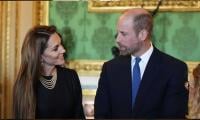News Analysis: SBP’s sins
What’s even worse is that there seems to be no plan, as a profligate sovereign, and an equally aloof central bank push a population of more than 230 million people over the edge
The way the State Bank of Pakistan has been acting lately is akin to standing in the shower, turning on the hot water faucet, finding the water too hot, and then immediately turning on the cold-water faucet — but then it’s too cold. The unwise would keep fiddling with the faucet without letting the water run its course or giving time for water to reach a certain desired temperature.
The central bank increased its policy rate by 300 basis points in its Monetary Policy Committee meeting yesterday. Only about 15 months back, the same committee had categorically denied that inflation would be a challenge in the future, despite obvious signs of initiation of a commodity supercycle that increased prices of commodities across the board. The same committee was so confident that they even called ill-conceived fuel subsidies as deflationary – much to their surprise that the same subsidies created a snowball effect that the country continues to come to terms with.
Finding the water too hot, the natural reaction would have been to turn on the cold water. But those with a complete lack of wisdom figured: let’s enjoy hot water till it lasts — eventually resulting in burns, and an emergency condition. The same happened in the case of Pakistan, and its monetary policy. The inability of the central bank to enable price stability has led to a complete and unprecedented disaster.
The State Bank has been maintaining negative real interest rates for more than three years now, printing cash in trillions, and pumping it into the market, which eventually pushed up demand. The country currently has more than Rs8 trillion in currency in circulation, making up almost 20 per cent of GDP. The State Bank is the sole party responsible for it.
As the cash in the economy sloshes around and inflates the informal economy, it continues to exert pressure on the formal economy, which is desperately trying to stay afloat. A fiscally irresponsible sovereign is a cherry on top, as it refuses to mend its broken ways, basking in the reflected glory of some bygone days.
This is a story of two economies, a formal economy, and a cash-based economy. The central bank has barely used any tool to reduce the size of this cash-based economy. Interest rates are a blunt force tool, and an increase cannot magically bring grey cash from the informal economy into the formal economy. As an increasing quantity of money supply stays out of the system, it will continue to fuel inflation. The core job of a central bank is to ensure price stability. The State Bank of Pakistan has failed to ensure this.
Successive monetary policy statements continue to target a fantasy of a target inflation of 5-7 per cent over the medium term. The medium term keeps being extended into the future, as the central bank continues to lose its credibility. Inflation in Pakistan, whether headline or core, continues to be considerably higher than its peers, despite being exposed to similar levels of commodity and price shocks.
Interest rates have reached their highest ever level, and sadly, the peak is not yet in sight. What’s even worse is that there seems to be no plan, as a profligate sovereign, and an equally aloof central bank push a population of more than 230 million people over the edge. The recent increase in interest rates will spell disaster for economic activity, and we may see another significant inflationary rout before things stabilize. The unwise continue to burn.
-
 Chad Michael Murray Admits 2000s Fame Could Have 'destroyed' Him
Chad Michael Murray Admits 2000s Fame Could Have 'destroyed' Him -
 Emma Stone Reflects On Diane Keaton's 'most Valuable' Lesson
Emma Stone Reflects On Diane Keaton's 'most Valuable' Lesson -
 Kanye West Once Paid $1 Million Per Day To Record Album: Here's Why
Kanye West Once Paid $1 Million Per Day To Record Album: Here's Why -
 Prince Harry Hopes To Show Archie, Lilibet Where He 'grew Up'
Prince Harry Hopes To Show Archie, Lilibet Where He 'grew Up' -
 Jacob Elordi Names Childhood Crushes Including A Major 60s Star
Jacob Elordi Names Childhood Crushes Including A Major 60s Star -
 Kristin Davis Dicusses Fate Of Her Sex And The City Character
Kristin Davis Dicusses Fate Of Her Sex And The City Character -
 Zara Larsson Steps Up Criticism Against 'evil' Policies
Zara Larsson Steps Up Criticism Against 'evil' Policies -
 Adam Sandler Jokes About Aging As He Accepts Career Honour
Adam Sandler Jokes About Aging As He Accepts Career Honour -
 Royal Stalker Cases Increase Following Harry, Meghan's Marriage: Report
Royal Stalker Cases Increase Following Harry, Meghan's Marriage: Report -
 Sarah Ferguson Eyes Princess Diana’s Private Letters In Bid To Secure Future
Sarah Ferguson Eyes Princess Diana’s Private Letters In Bid To Secure Future -
 Andrew Plots Secret Sales Of Royal Jewels Amid Royal Lodge Eviction
Andrew Plots Secret Sales Of Royal Jewels Amid Royal Lodge Eviction -
 Abbott Elementary Star Chris Perfetti Hints At What To Expect From Season 5
Abbott Elementary Star Chris Perfetti Hints At What To Expect From Season 5 -
 Prince William Always Ready To Step Up: ‘He’s Barely Able To Contain His Fury When Kate’s Involved’
Prince William Always Ready To Step Up: ‘He’s Barely Able To Contain His Fury When Kate’s Involved’ -
 Florida Woman ‘tricked Innocent Movers Into Helping Her’ $7k Burglary: Report
Florida Woman ‘tricked Innocent Movers Into Helping Her’ $7k Burglary: Report -
 Harry Deserves Top Protection As King Charles’ Son, Prince William’s Brother
Harry Deserves Top Protection As King Charles’ Son, Prince William’s Brother -
 Meghan Markle Receives Key Advice As Experts Warn She’s Doing Too Much
Meghan Markle Receives Key Advice As Experts Warn She’s Doing Too Much



